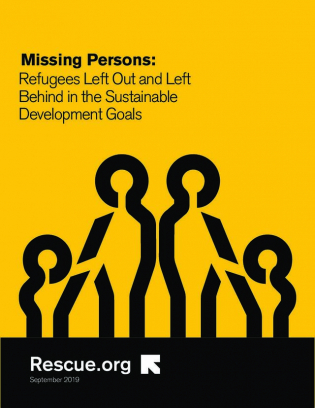Missing Persons: Refugees Left Out and Left Behind in the SDGs

IRC's analysis of refugees’ progress towards the SDGs is highly concerning. For example, in Lebanon, nearly 70 percent of Syrian refugees live below the national poverty line, compared to 26 percent of their Lebanese peers.
However, you will not find these statistics in any official SDG progress reports, where refugees are all but invisible. Of 42 countries that submitted 2019 Voluntary National Reviews just 13 mentioned refugees as meriting specific attention. Not one single VNR includes data on refugees to measure their progress towards the SDGs.
Refugees’ exclusion from VNRs is illustrative of what IRC calls the “SDG refugee gap”. This gap is represented by a lack of data on refugee well-being, the exclusion of refugees from SDG monitoring frameworks and national reporting, and the failure to include refugees in national medium- and long-term development planning.
The great promise of the 2030 Agenda is that it represents a shared vision and commitment by all 193 UN Member States. But this conversation led by and between Member States misses a critical factor: it leaves out refugees and other forcibly displaced people, rendering these populations in dire need, neglected and ignored.
This report looks at measuring progress for refugees, the "SDG Refugee Gap"; barriers to measuring the SDG refugee gap and provides concrete recommendations for improving data.